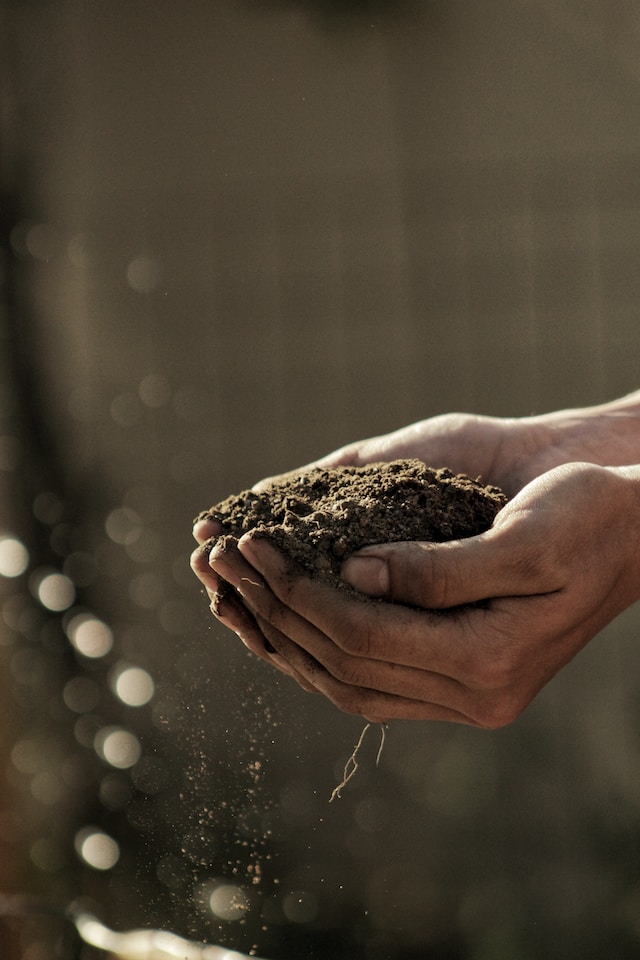This is a guest post by David Ford. You can find Part 1 here.
So here we are, well into our journey to become full-time homesteaders. We have been working hard to learn about ecological succession and to make an overall plan for living in partnership with the land.
Methods
As mentioned before, we want to use a combination of organic agriculture, permaculture, and regenerative agriculture. Explaining organic agriculture is simple: Everyone seems to have a different idea what being “organic” is. Our take on organic is not using any synthetic chemicals on the land.
Permaculture is a sustainable design system that aims to create ecologically sound and economically viable systems that provide for their own needs without exploiting or polluting the environment. It offers solutions for soil fertility, water conservation, climate change mitigation, and animal habitat. Its design principles help maximize biodiversity and preserve wildlife by creating more habitat for animal species. Permaculture looks at adopting sustainable methods, be it in a garden, a community, or in homes. The ultimate goal of permaculture is to create systems that are sustainable in the long term and have minimal environmental impact.
An approach to food and farming systems that focuses on rehabilitating and conserving the land is known as regenerative agriculture. The primary objective is to regenerate topsoil, increase biodiversity, improve the water cycle, enhance ecosystem services, support bio-sequestration, increase resilience to changes in climate, and strengthen the health and vitality of the farm soil.
Regenerative agriculture is not a single practice; instead, it employs a variety of sustainable agriculture techniques in combination. This includes recycling as much farm waste as possible and adding composted material from sources outside the farm. Regenerative agriculture on small farms and gardens is often based on philosophies like permaculture, agroecology, agroforestry, restoration ecology, keyline design, and holistic management. Large farms are also increasingly adopting such techniques and often use “no-till” and/or “reduced-till” practices. As soil health improves, input requirements may decrease, and crop yields may increase.
This is because healthy soil is more resilient against extreme weather and harbors fewer pests and pathogens. Regenerative agriculture also helps mitigate changes in climate by removing carbon dioxide from the atmosphere and sequestering it.
Permaculture is a holistic approach to creating sustainable human habitats and food systems, while regenerative agriculture is a farming technique that emphasizes soil improvement and closed-loop systems where waste is repurposed as food.
Attitudes About Where You Live Have Changed
One of the biggest shifts our family has noticed is the evolving concept of what a home represents. In the past, a home was considered a permanent fixture where families would gather for special occasions, raise their children, and occasionally seek refuge. It was a place where one “lived,” complete with all the amenities and luxuries that one could desire.
However, when I asked my kids what a home meant to them, they responded by saying, “Our house is simply where we store our stuff.” Over the last few decades, people have begun to lead more active lives outside of their homes. Therefore, the idea of what constitutes a home has changed. It’s now viewed as a sanctuary where individuals or families can retreat from the hustle and bustle of the world, recharge their batteries, lick their wounds, and center themselves before venturing out once again. For me personally, my home serves as a fortress of solitude, my own Batcave where I can retreat from the world and contemplate what life is.
We found it easy to determine what we wanted and needed because we were clear on what we didn’t want. We no longer yearned for a big house in the suburbs with a perfectly manicured lawn enclosed by a white picket fence, as that idea lost its appeal in the aftermath of the 2008 crisis. Instead, we sought a modest dwelling that would not drain our finances and leave us with little disposable income to enjoy life. Our goal was to find a cozy haven where we could retreat from the world with our children. And We found that with a Shed-To-Home conversion.
Shed House
In recent years, the concept of a shed house has gained popularity among many individuals. This trend is primarily fueled by a desire for minimalism, with proponents seeking to save space and money. While a traditional home may set one back several hundred thousand dollars, a shed house can be constructed for as little as $10,000. This eliminates the need for monthly mortgage or rent payments, allowing people to afford their own home with just a few years of saving.
When considering the purchase of a cabin shed, it’s important to keep in mind that completing the interior will be necessary before it can be lived in. This will include adding utilities and finishing touches which will approximately double the overall cost of the shed. However, despite this additional cost, tiny shed homes still offer a more affordable housing option than the average cost of a traditional home. By embracing the simplicity and minimalism of living in a smaller space, you can cultivate resourcefulness as a key attribute. Rather than investing in a large 3,000 sq. ft. home, consider the benefits of a few hundred square feet of living space. Our shed home is currently 702 sq feet, with the maximum size being 792 sq feet.
Houses in the United States have significantly increased in size over the years. According to New Home Source, the average size of new homes built in the United States has grown by 62 percent from 1,660 square feet in 1973 to 2,687 square feet in 2015. This is an increase of 1,027 square feet, and some houses can even have over 10,000 square feet of living space. I had to think about this and came to an easily-answerable question: Do I really need more living space than my grandparents?
When it comes to shed houses, there are some clear advantages. For one, they tend to have a smaller footprint, which means they require less water, electricity, and heating overall. This can make them a more environmentally-friendly choice. Additionally, shed homes can be designed to blend in with their surroundings, which can make them less obtrusive and more visually appealing. Because they are smaller and more versatile, they can be placed in a spot that is more fitting with the natural landscape. Overall, shed homes may be a great option for those looking for a more sustainable and aesthetically pleasing living space.
One of the most appealing aspects of a shed home is the endless potential for creative expression. As homeowners, we can use this unique space to truly showcase our individuality and tell our own personal stories. The possibilities are truly limitless, and the end result is a home that not only meets our practical needs but also reflects who we are as individuals.
As homesteaders, we value the freedom that comes with living off the land. Through the cultivation of our gardens, food forest, and the construction of our family home, we are not only living life but also actively participating in the creation of a life that provides us with the freedom to live on our own terms.



